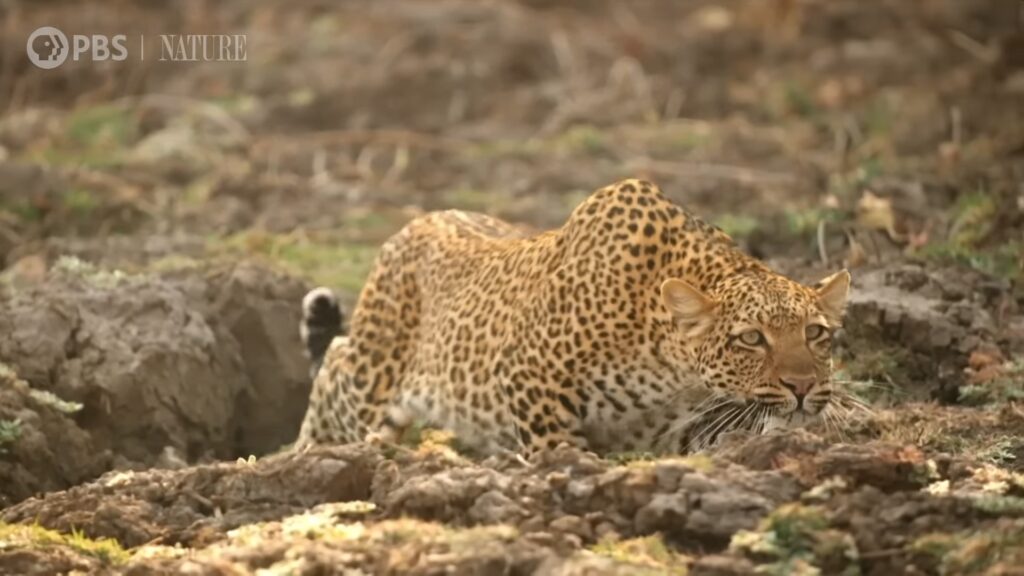The Unseen War When a Leopard Hunts a Baboon in Broad Daylight
The African savanna sleeps with one eye open. We imagine it under a blanket of stars, where lions roar and the hunt unfolds in shadow. But the most dramatic, high-stakes battles often happen under the full, unforgiving glare of the midday sun. And few are as intense as the clash between a leopard and a baboon.
It’s a scene that defies expectations. The leopard, a master of crepuscular camouflage and nocturnal ambush, stepping out from the shadows. Its prey? Not a fleet-footed impala or an unsuspecting warthog, but a member of a highly intelligent, socially complex, and brutally armed primate troop.
This isn’t just a hunt; it’s a declaration of war.



The Predator: A Calculated Risk
For a leopard, hunting in broad daylight is a gamble. It sacrifices its greatest advantage: the cover of darkness. Every ripple of muscle, every twitch of its tail is exposed. So why do it? The answer is often a mix of opportunity and necessity. A lone baboon, momentarily distracted or separated from the group, can present a target too good to ignore. Or perhaps, hunger gnaws, forcing the predator to take a risk it would normally avoid.
The leopard’s approach is a masterclass in patience. It will use every blade of grass, every rock, every dip in the terrain to get closer. Its spotted coat, designed for the dappled light of dusk, must now blend with the golden, sun-bleached grass. It moves with a silent, liquid grace, belly low to the ground, a coiled spring of muscle and deadly intent.
The Prey: A Fortress on the Move
To underestimate a baboon is a fatal mistake. A troop of baboons is not a herd of passive grazers; it’s a mobile, highly organized society. They have sentinels, constantly scanning the horizon from high vantage points. They communicate with a complex series of barks, grunts, and shrieks. An alarm call can turn a foraging party into a defensive mob in seconds.
And then there are the alpha males.
These are not simple prey animals. A large male baboon is a powerhouse of muscle, courage, and aggression, armed with canine teeth as long and sharp as the leopard’s own. They are the troop’s soldiers, and they will not hesitate to charge a predator to defend their family. They have been known to mob and even kill leopards that make a foolish move. They are intelligent, they are coordinated, and they are fiercely brave.
The Moment of Truth
When the leopard finally explodes from its cover, it is a blur of rosettes and fury. The tranquil scene shatters. The air erupts with a cacophony of panicked screams from the baboons and a guttural, terrifying snarl from the attacker.
The leopard’s strategy is precision. It cannot afford a prolonged fight. It must isolate its target—often a younger or more vulnerable individual—and deliver a swift, decisive bite to the neck or skull. It’s a move requiring immense power and pinpoint accuracy.
But the troop’s reaction is just as swift. Chaos reigns, but it’s a purposeful chaos. While the younger baboons scramble for the safety of the trees, the large males often turn to face the threat head-on. They advance, barking furiously, baring their formidable teeth in a unified show of force. Their goal is to intimidate, to overwhelm, and to rescue their own.
If the leopard is successful, it must make its escape immediately. It will grab its prize and, with a staggering display of strength, drag the carcass towards the nearest tree. The branches are its only safe haven from the enraged baboon mob and opportunistic hyenas drawn by the commotion.